Location Shinkolobwe Closed 2004 | ||
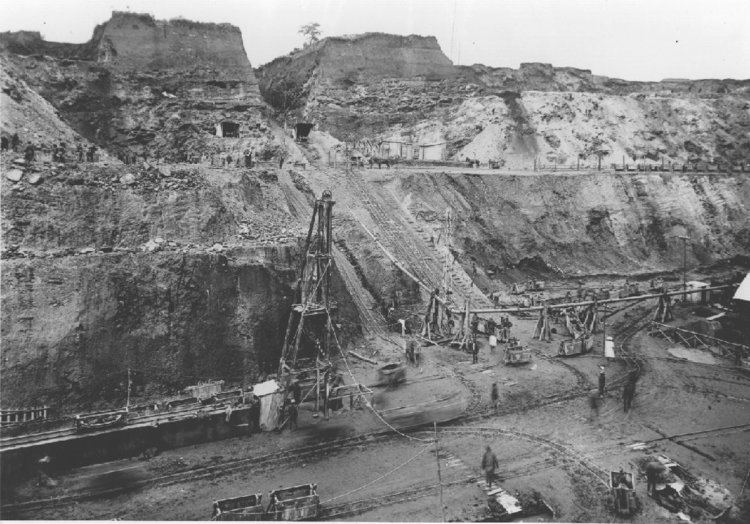 | ||
Weather 21°C, Wind SE at 8 km/h, 87% Humidity | ||
Shinkolobwe uranium 1 wmv
Shinkolobwe, or Kasolo, or Chinkolobew, or Shainkolobwe, is a radium and uranium mine in the Katanga province of the Democratic Republic of the Congo (DRC), located 20 km west of Likasi, 20 km south of Kambove, and about 90 miles northwest of Lubumbashi.
Contents
- Shinkolobwe uranium 1 wmv
- Uraninite shinkolobwe
- History
- Uranium for the Manhattan Project
- Postwar
- Closure
- Uranium for Iran allegation
- Geology
- References

The mine produced uranium ore for the Manhattan Project. It was officially closed in 2004.
Uraninite shinkolobwe
History

Shinkolobwe is the name of a nearby village, long since gone, and the name of an indigenous thorny fruit. According to Zoellner, it is also slang for "a man who is easygoing on the surface but who becomes angry when provoked."
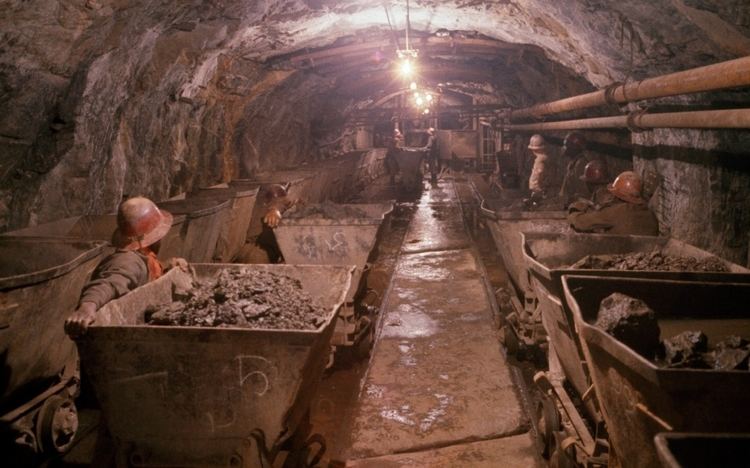
The mineral deposit was discovered in 1915 by an English geologist Robert Rich Sharp (1881-1958). The mine was worked from 1921 onwards. Uranium-bearing ore was initially exported to Olen, Belgium for the extraction of radium, and uranium. Open-cut mining was suspended at 57 m and at the 79 level underground in 1936.
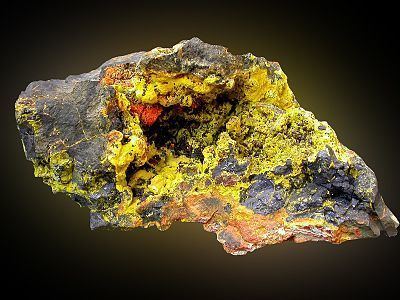
Both Britain and France expressed interest in the Belgium inventory of uranium ore in 1939. Nothing further happened though after the Nazis occupied Belgium in 1940, gaining control of the ore still "on the docks".

Open-cut operations restarted in 1944, and underground in 1945. This required pumping the mine dry since the water table was at about 45 m. The 255 m level was reached in 1955.
Uranium for the Manhattan Project

The United States used Shinkolobwe's uranium resources to supply the Manhattan Project to construct the atomic bomb in World War II. Edgar Sengier, then director of Union Minière du Haut Katanga, had stockpiled 1,200 tonnes of uranium ore in a warehouse on Staten Island, New York. This ore and an additional 3,000 tonnes of ore stored above-ground at the mine was purchased by Colonel Ken Nichols for use in the project. Nichols wrote:
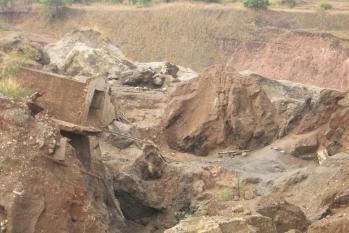

In 1940, 1200 tons of stockpiled uranium ore were shipped to the US by Edgar Sengier's African Metals Corp., a commercial arm of Union Miniere. Then, after the Sept. 1942 agreement with Nichols, an average of 400 hundred tons of Uranium oxide were shipped to the US each month. Initially, the port of Lobito was used to ship the ore, but later Matadi was used to improve security. Only two shipments were lost at sea. The aerodromes in Elizabethville and Leopoldville were also expanded. Additionally, the mine was reopened with the help of the United States Army Corps of Engineers, which involved draining the water and retooling the facility. Finally, the Office of Strategic Services were enlisted to deal with the threat of smuggling to Germany.
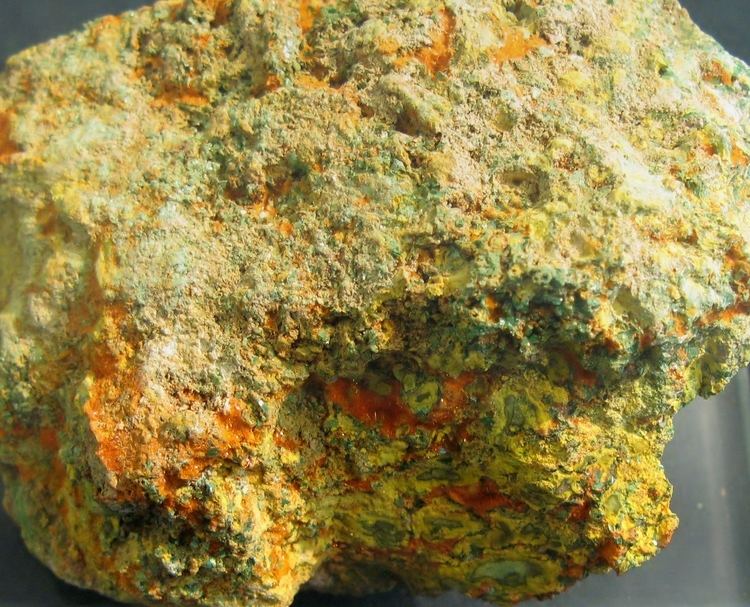
American interest in the Shinkolobwe mine for the purpose of developing of nuclear weapons led to the implementation of extensive security measures. Shinkolobwe's location was removed from maps and journalists were denied access to the mine and official information.
Postwar
Security measures were slightly more relaxed in the wake of World War II, but in the 1950s, most journalists were able to gather only scraps of information on the mine's operation, from unofficial sources. In 1950, a uranium processing plant was said to be under construction near the mine. At the time, Shinkolobwe was believed to contain roughly half of the world's known reserves of uranium.
In 1947, the U.S. received 1,440 tons of uranium concentrates from the Belgian Congo, 2,792 in 1951, and 1,600 in 1953. A processing plant was added nearby, and for increased security, a garrison was also established, with a supporting NATO military base in Kamina. Jadotville became a security checkpoint for foreigners. However, by the time of Congo independence, Union Miniere had sealed the mine with concrete.
Closure
The mine was officially closed on January 28, 2004, by presidential decree. However eight people died and a further thirteen people were injured in July 2004 when part of the old mine collapsed. Although industrial production has ceased with cement lids sealing off the mine shafts, there is evidence that some artisanal mining still goes on here. A United Nations inter-agency mission, led by the UN Office for Coordination of Humanitarian Affairs (OCHA) and the United Nations Environment Programme (UNEP), and organised through their Joint Environment Unit, visited the mine. The UNEP/OCHA concluded:
Shinkolobwe is representative of similar situations in Africa and elsewhere in the developing world. A strong link exists between rural poverty, environmental protection and this type of livelihood activity. Alternative income opportunities must be developed and integrated in parallel to artisanal exploitation if new livelihood options are to be found for these rural poor. A holistic, multidisciplinary approach within the context of poverty alleviation is essential to address this problem and avoid further human and environmental catastrophes."Uranium for Iran" allegation
On July 18, 2006, the DRC Sanctions Committee (United Nations Security Council Committee Established Pursuant to Resolution 1533 (2004), to give it its full name) released a report dated June 15, 2006, which stated that artisanal mining for various minerals continues at the Shinkolobwe mine:
149. During an investigation into alleged smuggling of radioactive materials, the Group of Experts has learned that such incidents are far more frequent than assumed. According to Congolese experts on radioactive materials, organs of State security have, during the past six years, confiscated over 50 cases containing uranium or cesium in and around Kinshasa. The last significant incident occurred in March 2004 when two containers with over 100 kilograms of stable uranium-238 and uranium-235 were secured.150. In response to a request for information by the Group of Experts the Government of the United Republic of Tanzania has provided limited data on four shipments that were seized over the past 10 years. Unfortunately the Government chose not to provide information about the quantities of the seized consignments nor the specific method of smuggling. At least in reference to the last shipment from October 2005, the Tanzanian Government left no doubt that the uranium was transported from Lubumbashi by road through Zambia to the United Republic of Tanzania. Attempts via Interpol to learn the precise origin within the Democratic Republic of the Congo have remained inconclusive.On August 9, 2006, the Sunday Times published a report claiming that Iran was seeking to import "bomb-making uranium" from the Shinkolobwe mine, quoting the UN report of July 18, 2006. It gives "Tanzanian customs officials" as its sole source for the claim that the uranium was destined for processing in the former Soviet republic of Kazakhstan via the Iranian port of Bandar Abbas. Douglas Farah has compared this to the incorrect claim that Saddam Hussein was trying to buy yellowcake uranium from Niger, which formed part of the case made by George W. Bush for the invasion of Iraq.
Geology
Uranium minerals, and associated cobalt, silver, nickel, bismuth and arsenic, occur as massive sulfide ore in veinlets along fractures, joints, and minor faults within the Katanga synclinorium. Uraninite mineralization occurred 630 Ma, when uraniferous solutions percolated into the dolomitic shales of the Precambrian Mine Series (Serie des Mines), under the Roche Argilotalqueuse nappe. Uraninite crystals from 1 to 4 centimeters were common. New minerals identified here include ianthinite, becquerelite, schoepite, curite, fourmarierite, masuyite, vandendriesscheite, richetite, billietite, kasolite, soddyite, sklodowskite, cuprosklodowskite, dewindtite, dumontite, renardite, parsonsite, saleite, sharpite, studtite, and diderickite. Similar uraninite deposits occur 36 km west at Swampo, and 120 km west at Kalongwe.
Surface ores consist of oxidized minerals from supergene alteration above the water table and the formation of uranyl minerals. Below the water table, hypogene ores include uraninite (pitchblende), Co-Ni sulfides and selenides.
